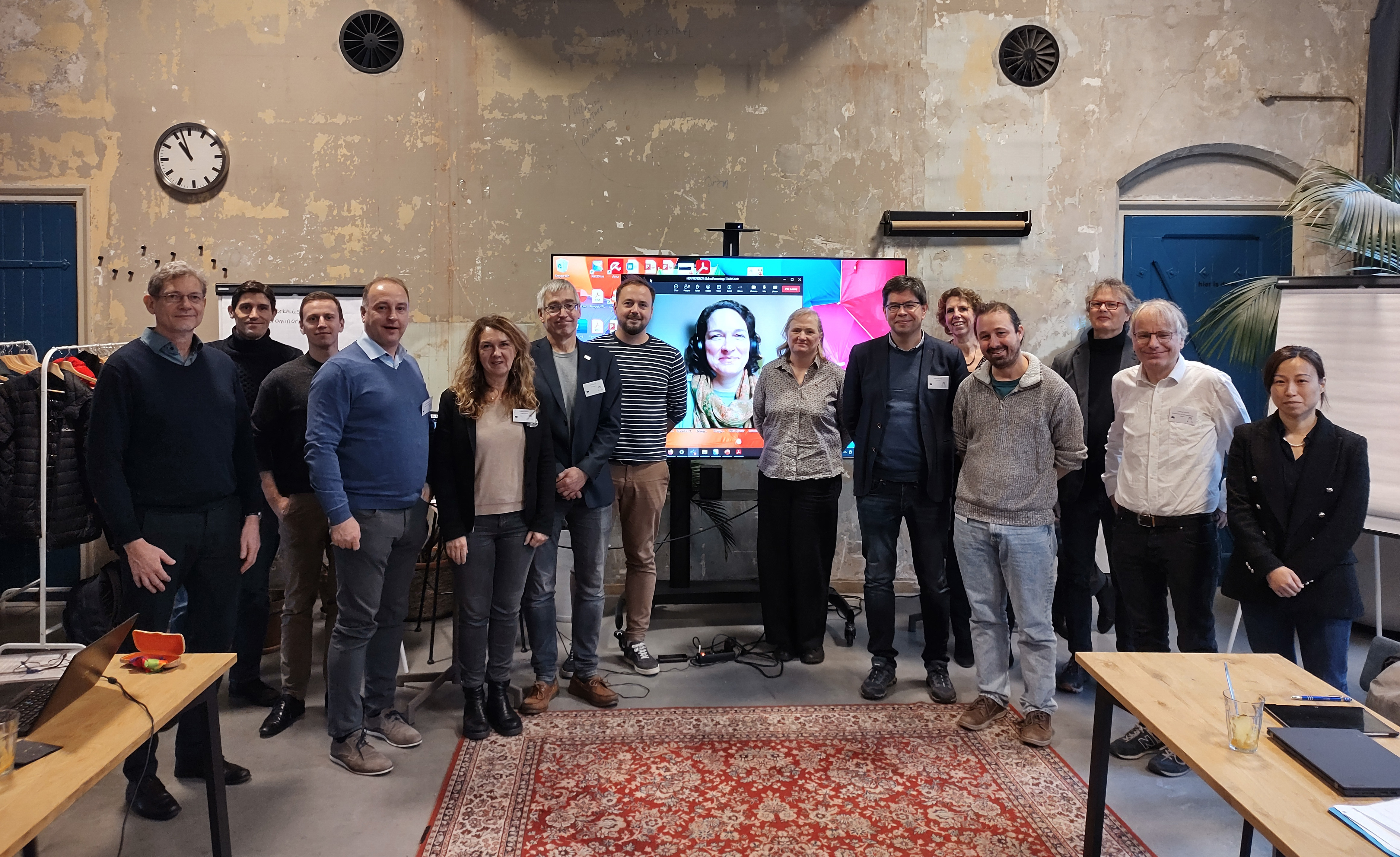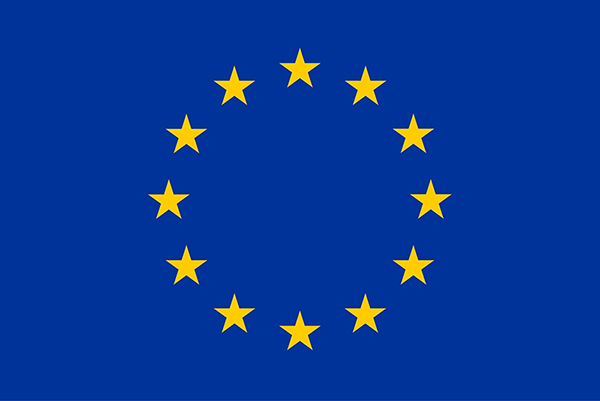New network to build the first realistic thermomagnetic generator for waste heat recovery
TU Delft leads HEAT4ENERGY, a European consortium, dedicated to develop thermomagnetic devices and novel materials to harvest heat from data centres, food, pulp and paper industries and convert this waste heat to electricity. This project ticks all the boxes: energy transition, decarbonising, low and high power devices for conversion of waste heat to electricity, energy storage, finding alternatives for critical raw materials, developing new materials and most important of all: training of a next generation of European experts.

On 30-31 January 2024, the HEAT4ENERGY project has been officially kicked off. HEAT4ENERGY is a 4-year EU-Horizon Europe MSCA Doctoral Network project aiming to train a new generation of enablers for the European Energy Transition. They will acquire these skills in practice by addressing the challenge of making the first realistic and energy efficient thermomagnetic devices for converting low grade waste heat (<100°C) to electricity. They will also learn how to upscale these and advance the technology to a viable market level. They will obtain the interdisciplinary competence required to bring this green technology to a mature level, and career perspectives in both the academic and non-academic sectors delivering the European Green Deal.
Carbon neutrality
The production and use of energy account for more than 75% of the EU’s greenhouse gas emissions. Decarbonising the EU’s energy system is therefore critical to reach our 2030 climate objectives and the EU’s long-term strategy of achieving carbon neutrality by 2050. Obviously solar and wind power will play an important role in any future energy scenario, but such intermittent sources present significant challenges in energy transport and storage. At the same time, a vast amount of low-grade heat is generated, e.g. in data centres, food, pulp and paper industries, and is available 24/7. Converting even only a small percentage of this heat into electricity is significant due to the sheer amount of heat wasted just above ambient temperature. However, efficient technologies to convert this low-grade heat in an economically sound way are lacking. Within this project, we will develop thermomagnetic energy harvesting from current TRL 3/4 proofs of principle to an efficient and cost competitive TRL 6/7 technology.
Demonstrators for conversion of waste heat to electricity
We will construct and experimentally validate three efficient demonstrators for the conversion of waste heat into electricity in the power range of 10 μW, 1 W and 100 W.
Andrej Kitanovski, University of Ljubljana: ''We will show that thermomagnetic energy harvesting can be an energy-efficient and compact technology capable of addressing existing and future power generation challenges. Special attention will be paid to the utilization of various low grade heat sources from a minimum of 40 to a maximum of 100 °C, which account for about 40 % of waste heat from industrial processes. For these, especially below 60-80°C, there is a lack of available, scalable, cost-effective and energy-efficient technologies for the conversion of waste heat into electricity. We will train PhD students and enable knowledge and technology transfer in the multidisciplinary fields of model-based engineering, fabrication technology, characterization and evaluation of innovative thermomagnetic generators from micro to macro scale.''
Tailor made Materials
Materials research will focus on materials preparation, shaping and functional characterization.
Anja Waske, Bundesanstalt für Materialforschung und -prüfung (BAM): “In the work package materials fabrication and characterization, an interdisciplinary team from materials science and engineering together with industrial partners will develop optimal materials and shapes for a new generation of thermomagnetic energy harvesting devices. We will synthesize, shape and characterize thermomagnetic materials and parts that efficiently transfer waste heat and convert it into electrical energy. Additionally, the parts must sustain numerous thermomagnetic cycles with negligible mechanical fatigue or corrosion. In-situ experiments in the final demonstrators will show the performance of these tailor made materials.”
Materials design and modelling
Focus is on the combination of physics simulations spanning different length scales and machine learning based optimization of chemical compositions and microstructures for materials.
Gilles de Wijs, Radboud University: “In this project we aim to predict optimal thermomagnetic materials, tailored to the operating conditions and system dimensions, using an extended in silico scanning method end exploiting novel AI. It is an exciting collaboration, joining key computational expertise from groups in Austria and The Netherlands."
Engaging industry
The increasing cost for energy makes their efficient use decisive for all types industry. This includes the need for recovering waste heat, but in particular for low-grade waste heat no mature technology is available today.
Sebastian Fähler, Helmholtz-Zentrum Dresden-Rossendorf: “As our project aims to close this gap, we appreciate to come into contact with industrial partners. A collaboration is of particular interest for industries not yet recovering their large amount of waste heat, requiring off-grid electricity and to power IoT, or developing other heat recovery devices. We expect benefit for both, as we learn more on dedicated requirements and can then address these particular needs. Collaboration is possible by participating in workshops, discussing in panels, or by additional joint projects.”
Training of a next generation of experts
Franca Albertini, Consiglio Nazionale delle Ricerche: “The European Energy Transition relies on a new generation of highly educated professionals active in all the societal sectors (e.g. industry, public institutions, academia) and able to evaluate and adopt new energy technologies and strategies. To achieve this goal HEAT4ENERGY Doctoral Network training is multidisciplinary and include different fields of engineering, physics and material science, combined with specific teachings focused on innovation and entrepreneurship, sustainable development and environmental protection. ”
Broad representation of specialists on thermomagnetic materials
An interdisciplinary consortium, lead by Delft University of Technology, including Karlsruher Institut für Technology, Consiglio Nazionale delle Ricerche, Helmholtz-Zentrum Dresden-Rossendorf, Bundesanstalt für Material-forschung und –prüfung, Univerza V Ljubljani, Radboud University, Centre National de la Recherche Scientifique CNRS, Universitat fur Weiterbildung Krems, Magneto B.V., memetis GmbH, Magnoric, Universita Degli Studi di Parma, Technische Universität Dresden, Université Grenoble Alpes and Technische Universität Wien address all major challenges for this emerging technology, which requires innovative designs of more efficient thermomagnetic generators, that are intimately connected with tailored thermomagnetic materials. Prof. E.H. (Ekkes) Brück of Delft University of Technology will be the coordinator of the 2.7 M€ project funded by European Commission under Grant Agreement no. 101119852.
Funding
The Marie Skłodowska-Curie Actions of the European Commission fund excellent research and innovation and equip researchers at all stages of their career with new knowledge and skills, through mobility across borders and exposure to different sectors and disciplines. The MSCA help build Europe’s capacity for research and innovation by investing in the long-term careers of excellent researchers.

Funded by the EU.